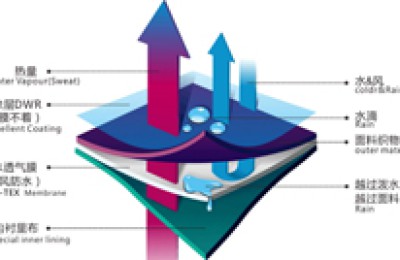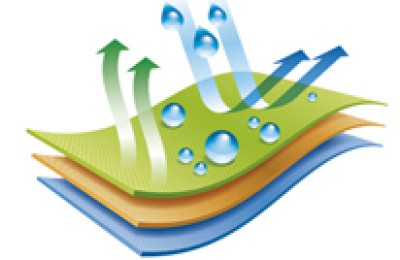A preliminary introduction to polyvinyl chloride fiber
A preliminary introduction to polyvinyl chloride fiber
Abstract: Polyvinylchloride fiber is a synthetic fiber composed of linear macromolecules composed of polyvinyl chloride or its copolymers. There are at least 50% vinyl chloride links in the macromolecular chain. At present, it occupies a certain proportion in human fibers, and a large number of new and useful products have been produced, so we will give a preliminary introduction to its production process and development status.
Keywords: polyvinyl chloride fiber
Initial development history
In 1913, Klatte produced the first batch of polyvinyl chloride fibers using thermoplastic extrusion.
In 1930, Hubert dissolved polyvinyl chloride in cyclohexanone, and then wet-spun it in an aqueous solution containing 30% acetic acid to produce polyvinyl chloride fiber for clothing.
In 1931, it was discovered that easily soluble polyvinyl chloride could be produced by supplementary chlorination in a homogeneous medium. This new polymer was later named chlorinated polyvinyl chloride.
After 1934, with the breakthrough of chlorinated polyvinyl chloride spinning technology, people in Germany and the United States began to spin vinyl chloride filaments and short yarns in large quantities.
Type, nature
PVC fibers can generally be divided into four types:
a.Polyvinyl chloride homopolymer PVC
b.Chlorinated polyvinyl chloride
c. Vinyl chloride-vinyl acetate copolymer
d.Polyvinylidene chloride and its copolymers with vinyl chloride
PVC homopolymer is the main variety among these types. 【1】
Polyvinyl chloride is called chlorine fiber in China. PVC fiber is made of polymers with high syndiotacticity as raw materials. The polymer has appropriate particle size, average molecular weight of 60,000 to 150,000, thermal decomposition temperature of 150 to 200°C, melting point of 170 to 220°C, and chlorine content. It is about 57%, and the syndiotacticity is above 64%. PVC fiber has self-extinguishing properties, which are not available in ordinary natural fibers and chemical fibers. It also has good stability against acids, alkalis, oxidants and reducing agents, and has good warmth retention properties. The obvious disadvantage is that it has poor heat resistance and cannot be ironed, steam sterilized or washed in boiling water (the shrinkage rate in boiling water reaches 50%).
Production status
There are currently at least eleven kinds of PVC or modified PVC fiber products. However, some of them use extrusion technology to make monofilaments, which limits their mobility. However, most of them are produced in the form of short fibers or tows, and a small amount of continuous filament yarn is also produced in France and Japan. Table 1 lists some of the major manufacturers, the trade names of their products and the types of spinning used.
PVC fiber wet spinning process
Kneading: In order to obtain the spinning solution, the polyvinyl chloride resin is first fully swollen in acetone. This operation is called kneading in production. The kneading temperature gradually rises from room temperature to 40-50oC, which depends on the moisture content of acetone. The kneading time is generally 4.5 to 6.0 hours. A small amount of heat stabilizer and colorant can be added during kneading.
Dissolution: Heating, reducing viscosity and increasing fluidity to obtain necessary spinnability. This process is often called dissolution in production. Dissolving involves passing the kneaded slurry through a jacket heater and rapidly heating it to 90-95°C. Since acetone boils at 56°C under normal pressure, the temperature-raising dissolution process must be carried out under pressure.
Filtration: Filtration under heat preservation and pressure.
Spinning: The coagulation bath is an acetone aqueous solution. The acetone content in the bath is controlled at 20% to 22%. The bath temperature is about 35°C. The spinning speed is generally 16 to 20m/min. The residence time of the filament in the coagulation bath is about 10 to 10%. 12s. The obtained virgin fibers are washed with water and then stretched.
Traditional wet spinning involves organic solvents and has certain pollution problems. Improving the fluidity of PVC through plasticization and increasing its decomposition temperature by adding heat stabilizers to achieve melt spinning of PVC fibers is a recent exploration in the field of scientific research. direction.
Application
PVC fiber products are mainly short fibers and bristle filaments, which can be used to make stage curtains, furniture decorative fabrics, filter materials, and work clothes. Due to its tendency to generate tribonegative electricity, the underwear made from it can alleviate neuralgia and rheumatic pain, and can therefore be used to make knitted underwear, sweatshirts, woolen clothes, sleeping bag padding, etc.
However, it is limited by its own shortcomings and its scope of application is not wide. Modified polyvinyl chloride fiber makes up for it.
Important modified varieties of polyvinyl chloride include vinylidene chloride fiber, perchlorethylene fiber and various copolymer fibers of vinyl chloride. Vinylidene chloride fiber is a chlorine-containing fiber produced by spinning more than 80% of the copolymer of vinylidene chloride and other monomers such as vinyl chloride. The average molecular weight of the copolymer is about 20,000. The resulting fiber has many Good non-burning performance, good acid and alkali resistance, and solid texture. Perchlorethylene fiber is also called chlorinated polyvinyl chloride fiber. It is called perchlorethylene in China. It is a chlorine-containing fiber made by dissolving perchlorethylene resin (chlorine content 64% to 65%) in acetone and wet spinning. fiber. The fiber has good acid and alkali resistance, but its strength is low and it begins to soften at 70°C. Its sunlight resistance is also worse than that of PVC fiber. Various copolymer fibers of vinyl chloride include vinyl chloride-vinyl acetate copolymer fiber, vinylidene chloride-vinyl chloride copolymer fiber, polyvinyl chloride-polyvinyl alcohol bicomponent fiber, etc.
Vinylidene chloride fiber and perchlorethylene fiber are mainly used as filter materials and fire-retardant decorative fabrics. It has many characteristics: flame retardant, warm, light-resistant, abrasion-resistant, corrosion-resistant and moth-resistant; elasticity is also very good; good warmth retention; easy to produce and maintain static electricity; because the molecules of chlorine fiber contain a large number of chlorine atoms, So it is difficultIt adopts pre-shrinkage treatment method. After this method is improved, the thermal stability of the fiber is further improved. At present, the heat shrinkage temperature of polyethylene fiber has been increased to 95-100℃.
At present, the above characteristics of polyvinyl chloride fiber are used to make various textiles. Half of its output is used to make underwear, part of which uses its electrostatic properties to make underwear for treating rheumatism, and a quarter of its output is used to make underwear. It is used to make household textiles (which meet the requirements of flame retardancy), and the rest is used to make various acid and alkali-resistant industrial textiles. These aspects of use have good results and are quite popular among people.
There is still a gap between my country’s polyvinyl chloride fiber production technology and advanced international production countries. We must develop the production of vinyl chloride monomer according to local conditions. Manufacturers with conditions should convert the monomer route as soon as possible and use the ethylene method instead of the acetylene method. In order to reduce costs, work should be carried out to reduce double consumption. The newly developed foreign direct chlorination/hydrogen chloride oxidation production of vinyl chloride monomer process and the new soda ash/dichloroethylene vinyl chloride monomer process as well as the oxychlorination of ethane vinyl chloride monomer Integrated technology is of great significance in reducing unit consumption and increasing product economic benefits. It is also one of the main directions of domestic scientific research in the future. wxya
Disclaimer:
Disclaimer: Some of the texts, pictures, audios, and videos of some articles published on this site are from the Internet and do not represent the views of this site. The copyrights belong to the original authors. If you find that the information reproduced on this website infringes upon your rights, please contact us and we will change or delete it as soon as possible.
AA






